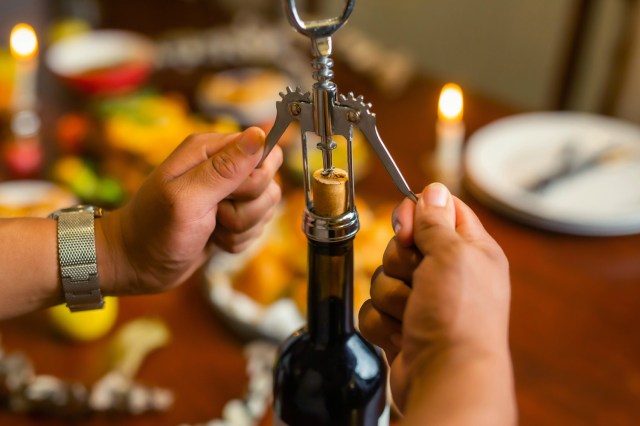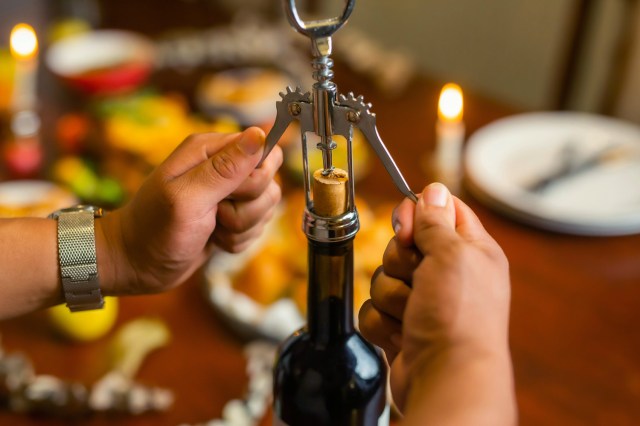A typical bottle of wine pours about five glasses, perfect for a night out with a loved one, a small group of friends, or anyone who loves hangovers. But what if you just want a glass with dinner or while relaxing with your favorite show? If you open that bottle of Cab, does the clock start ticking? The last thing you want is to waste those precious grapes, after all. Or could you pour yourself another glass a week later when that next episode airs with no ill effect? Well, wonder no more. This is how long wine stays good after you open it. Cheers!
All featured products and deals are selected independently and objectively by the author. Better Report may receive a share of sales via affiliate links in content.

Yes, Wine Goes “Bad”
Sorry to be the bearers of bad news, but wine does go bad. Oxidation turns wine — and beer, for that matter — bad. Meaning that once you let air into the mix, you are on the clock. The air converts the alcohol into acetaldehyde, lending your wine a tart, unpalatable profile. For example, if you’ve ever tasted a skunky beer, that’s most likely due to air seeping in or light streaming through a green glass bottle. Of course, this also depends on your definition of “bad.” Old wine is unlikely to harm you. It’s just turning into vinegar. If you unwind with a bottle of balsamic, have at it. But we prefer our wine as intended, and imagine you do, too.

How Long a Bottle of Open Wine Lasts
Not to introduce complexity into the mix, but how long a bottle lasts depends on the type of wine and how it is stored. A high-quality white, stored in the fridge will remain enjoyable for about five days. A lower-quality, mass-produced white probably only affords you two or three days.
A high-quality bottle of rich, full-bodied, tannin-heavy red can also last for five to seven days. The great Cabernet Sauvignon we mentioned earlier will last a week after you pull the cork. In contrast, a juicy bottle of Beaujolais should be consumed within half that time. You can — and should — toss these in the fridge to give yourself extra time. We like to follow the 30 minutes in, 30 minutes out rule — a white wine should come out of the fridge for 30 minutes before consuming, and a red should go in for about 30 minutes.
Fortified wines — your ports, sherries, and Madeiras, wines produced with a distilled spirit such as brandy — give you the most shelf life once open. The higher alcohol content and residual sugar give some inherent protection from the effects of oxidation. While a high-quality sherry could stay good for up to a month after opening, you still want to shoot for that one-week mark for the best aroma and flavor.
Sparkling wine introduces another variable: carbonation. For that reason, they’re best consumed within a day or two of opening, and you’ll need to use a wine stopper to preserve those bubbles.

What Can You Do to Help?
We mentioned keeping the bottle in the fridge already, which slows down the process of oxidation. In addition, you should consider a vacuum pump. These devices remove air to minimize oxidation. If you’re willing to spend a bit more, Coravin makes a preservation system that lets you pour a corked bottle of wine without actually removing the cork, again greatly minimizing air contact. In so doing, the company claims a bottle poured from a Coravin can last years.
Reader Favorites

Praise the Half Bottle
Most wine shops have a selection of half bottles, which we’ve fallen in love with because they eliminate the worry of discarding unconsumed vino. And the name is quite literal. Whereas your standard-size bottle of wine contains 750 milliliters, a half bottle contains — wait for it — 375 milliliters. That means two and a half glasses are waiting for you after you buy a bottle. Sure, the selection is more limited, and if you have the finest taste, you might have to do some searching for the perfect half bottle, but we prefer the convenience of the diminutive size.
Featured Image Credit: Jordan González/ Unsplash+
More From Our Network
Better Report is part of Inbox Studio, which publishes content that uplifts, informs, and inspires.
















